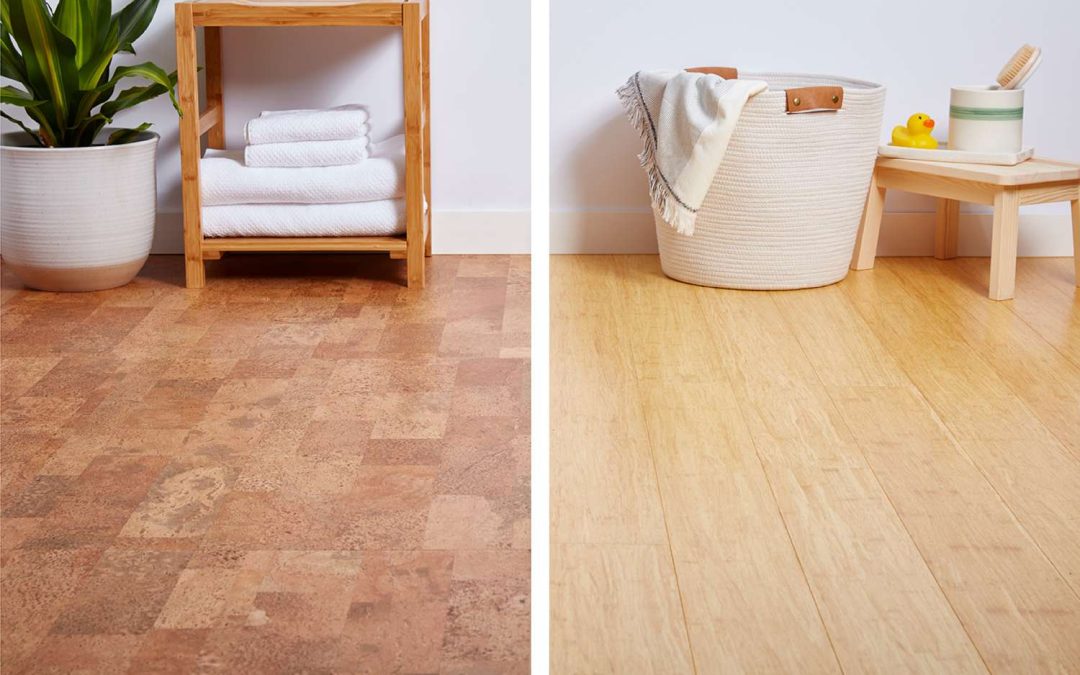Introduction
When it comes to choosing the perfect flooring material for your home, cork, and bamboo are two popular options that offer unique benefits and characteristics. Both cork and bamboo flooring have gained popularity in recent years due to their sustainability, durability, and aesthetic appeal. In this comprehensive comparison, we will delve into the key features of cork and bamboo flooring, examining their differences in terms of durability, eco-friendliness, installation, maintenance, and overall performance.
Durability
In terms of durability, both cork and bamboo flooring have their own strengths. Cork flooring is naturally resilient, thanks to its unique cellular structure, which allows it to compress and bounce back when subjected to pressure. This makes it highly resistant to dents and impacts. Bamboo flooring, on the other hand, is known for its exceptional hardness, comparable to hardwood flooring options like oak or maple. It can withstand heavy foot traffic and is less prone to scratches and dents.
Eco-Friendliness
For environmentally conscious homeowners, both cork and bamboo flooring are excellent choices. Cork is derived from the bark of the cork oak tree, which is harvested without harming the tree itself. The bark regenerates, making cork a sustainable and renewable resource. Bamboo, on the other hand, is a fast-growing grass that reaches maturity within 5-7 years, making it an incredibly renewable material. It is important to note, however, that the eco-friendliness of bamboo flooring can vary depending on the manufacturing process and the use of adhesives or finishes. Opting for bamboo flooring that is certified by reputable eco-labels can ensure its sustainability.
Installation
Both cork and bamboo flooring offer relatively easy installation processes. Cork flooring is commonly available in two forms: tiles and floating planks. Cork tiles are typically glued down to the subfloor while floating cork planks have interlocking edges that allow them to be installed without adhesives. Bamboo flooring is usually available in three installation types: nail-down, glue-down, and floating. Nail-down installation requires fastening the bamboo planks to the subfloor, while glue-down involves using adhesive to attach the planks. Floating installation utilizes a click-and-lock mechanism that allows the planks to be installed without nails or glue. Depending on your preference and skill level, you can choose the installation method that suits you best.
Maintenance
Both cork and bamboo flooring require regular maintenance to keep them in optimal condition. Cork flooring should be swept or vacuumed regularly to remove dirt and debris. Spills should be wiped up promptly to prevent moisture penetration. Periodic resealing is recommended to maintain the protective layer on the cork surface. Bamboo flooring can be cleaned using a broom or a dust mop to remove loose dirt. It is important to avoid excessive moisture when cleaning bamboo floors, as water can cause damage. Spills should be wiped up immediately, and a damp mop can be used for deeper cleaning. It is also advisable to use felt pads on furniture legs to prevent scratches on both cork and bamboo floors.
Overall Performance
In terms of overall performance, both cork and bamboo flooring have their advantages. Cork flooring provides excellent insulation properties, making it comfortable to walk on and helping to maintain consistent indoor temperatures. It also offers good sound absorption, reducing noise transmission between floors. Bamboo flooring is known for its attractive appearance and durability. It is resistant to moisture, making it suitable for areas prone to humidity. However, it is important to note that both cork and bamboo flooring can be susceptible to UV fading over time, and direct sunlight should be minimized to preserve their color and appearance.
Conclusion
Choosing between cork and bamboo flooring ultimately depends on your specific needs and preferences. Cork flooring offers resilience, eco-friendliness, and comfort, while bamboo flooring provides durability, hardness, and a visually appealing aesthetic. Consider factors such as the level of foot traffic, desired visual style, and environmental considerations when making your decision. Whether you opt for the natural warmth of cork or the contemporary elegance of bamboo, both options offer sustainable and durable flooring solutions that can enhance the beauty and functionality of your home.

